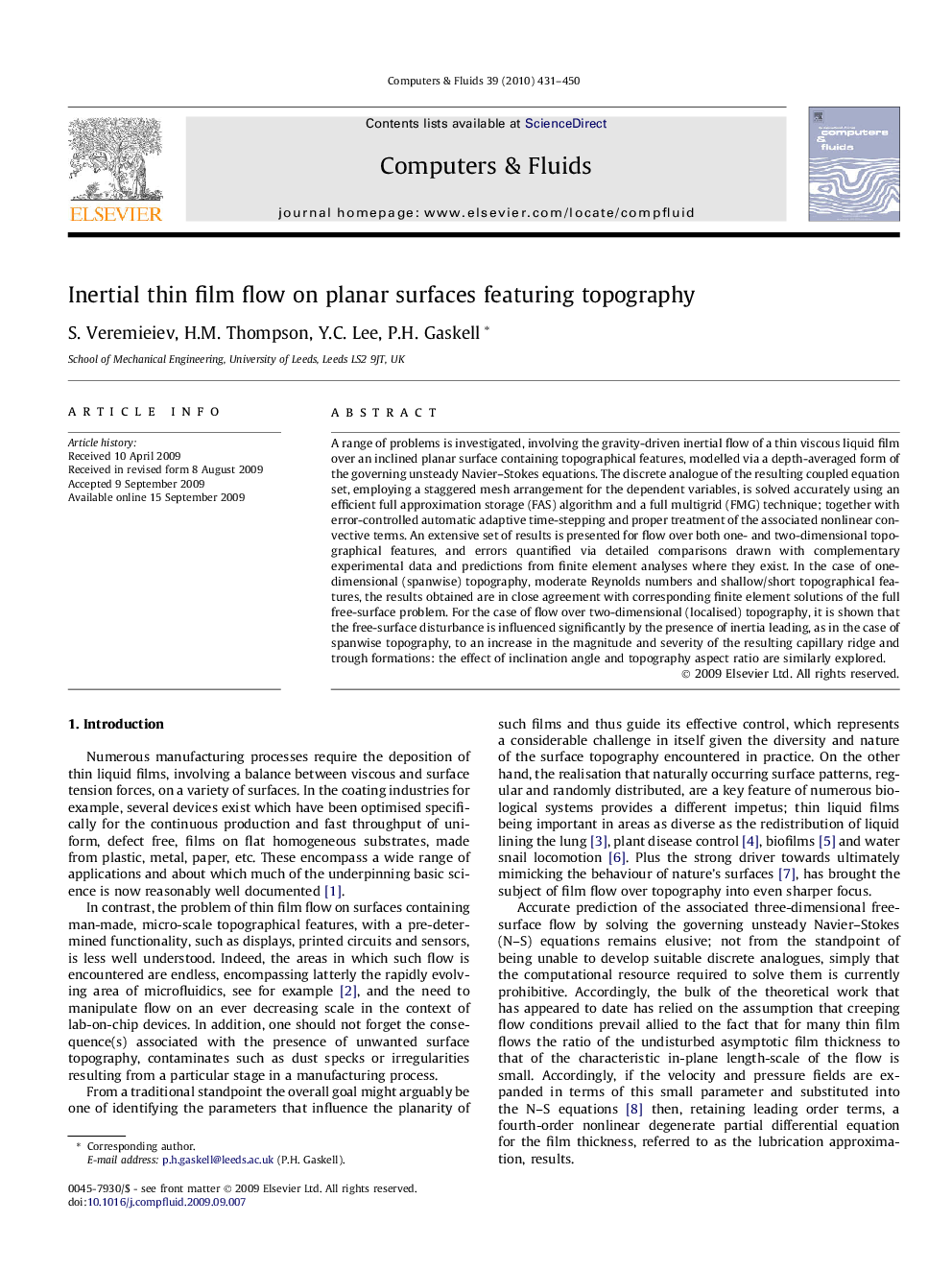| Article ID | Journal | Published Year | Pages | File Type |
|---|---|---|---|---|
| 769252 | Computers & Fluids | 2010 | 20 Pages |
A range of problems is investigated, involving the gravity-driven inertial flow of a thin viscous liquid film over an inclined planar surface containing topographical features, modelled via a depth-averaged form of the governing unsteady Navier–Stokes equations. The discrete analogue of the resulting coupled equation set, employing a staggered mesh arrangement for the dependent variables, is solved accurately using an efficient full approximation storage (FAS) algorithm and a full multigrid (FMG) technique; together with error-controlled automatic adaptive time-stepping and proper treatment of the associated nonlinear convective terms. An extensive set of results is presented for flow over both one- and two-dimensional topographical features, and errors quantified via detailed comparisons drawn with complementary experimental data and predictions from finite element analyses where they exist. In the case of one-dimensional (spanwise) topography, moderate Reynolds numbers and shallow/short topographical features, the results obtained are in close agreement with corresponding finite element solutions of the full free-surface problem. For the case of flow over two-dimensional (localised) topography, it is shown that the free-surface disturbance is influenced significantly by the presence of inertia leading, as in the case of spanwise topography, to an increase in the magnitude and severity of the resulting capillary ridge and trough formations: the effect of inclination angle and topography aspect ratio are similarly explored.
